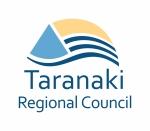March's ill wind blows some good
Taranaki’s Civil Defence communications and activation procedures will be simplified and strengthened as a result of lessons learned in the wind-storm that hit Patea, Waverley and surrounding areas in March.
Civil Defence will also work with these and other small townships in the region to develop locally based community response plans for emergency events.
The two initiatives have emerged as key areas to enhance the region’s resilience, says the Chairman of the region’s Civil Defence Emergency Management Group, Taranaki Regional Councillor Brian Jeffares.
He says the March storm had a major impact on Patea and Waverley, and farmers in the surrounding hinterland, and outstanding work was done by agencies and individuals responding to the event.
Civil Defence appointed a Recovery Manager to assist the communities get back on their feet in the aftermath of the storm. It also organised public feedback meetings and private debriefing sessions, involving a broad range of organisations and agencies, to see what could be improved.
“Any event like the March wind-storm brings an opportunity to review and improve procedures, and Civil Defence is keen to gain full benefit from the lessons that can be learned,” says Mr Jeffares.
“This event also reinforced a basic Civil Defence message – that people need to make sure they can cope on their own for at least three days after a disaster.”
As a result of the wind-storm, some Civil Defence procedures will be “tweaked” and streamlined to ensure:
Organisations and staff within them are clear about their own roles and the role of Civil Defence during a developing emergency.
Better communication within and between organisations in the early stages of an emergency event.
That there is a clearly understood process for activation of the Taranaki Emergency Management Office (TEMO) in New Plymouth, and utilization of its services, whether or not a formal emergency declaration is made.
Mr Jeffares says it’s timely that the Taranaki Civil Defence Emergency Management Group is about to adopt a new Group Plan covering its objectives and activities in the next five years.
“A key focus will working with communities like Patea and Waverley to prepare Community Response Plans. These will help communities marshal their resources during any emergency, big or small, and understand roles and responsibilities – their own, as well as Civil Defence and other agencies.”
He says it’s important for people to understand Civil Defence’s role. “We co-ordinate and support agencies and other organisations responding to major emergencies whose effects are widespread and complex. We’re not the cavalry riding over the hill on white horses.”
The Civil Defence Emergency Management Group is made up of the region’s three Mayors, representing the three District Councils, and Mr Jeffares, representing the Taranaki Regional Council. Routine Civil Defence activities are overseen by a Co-ordinating Executive Group (CEG) made up off officials from the Councils and other agencies including emergency services.
The three Mayors, along with Taranaki Regional Council Chairman David MacLeod, are also trustees of the Taranaki Disaster Relief Fund, which is about to begin distributing funding assistance to some of the people affected by the March storm. Applications for funding closed at the beginning of June.
